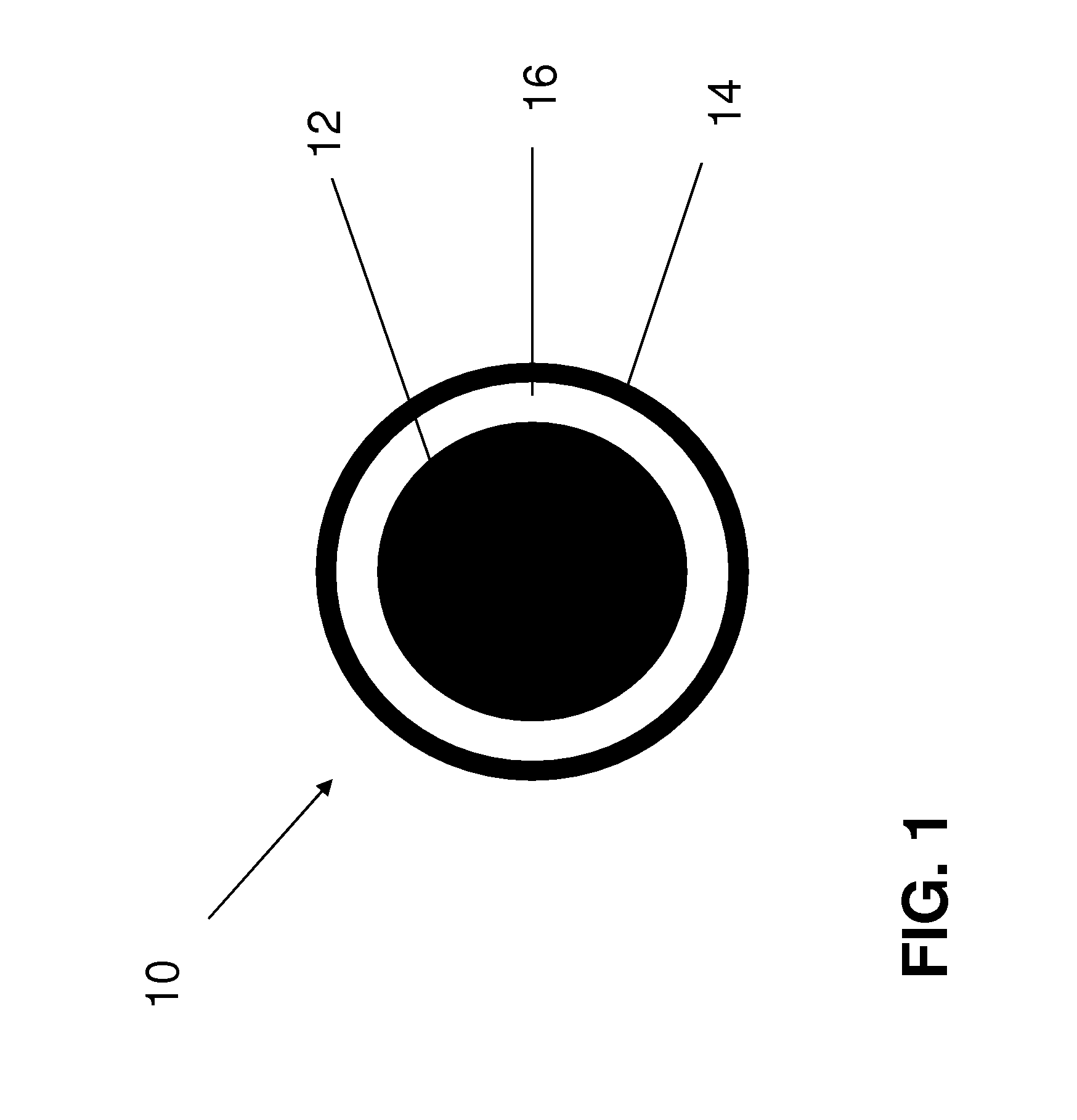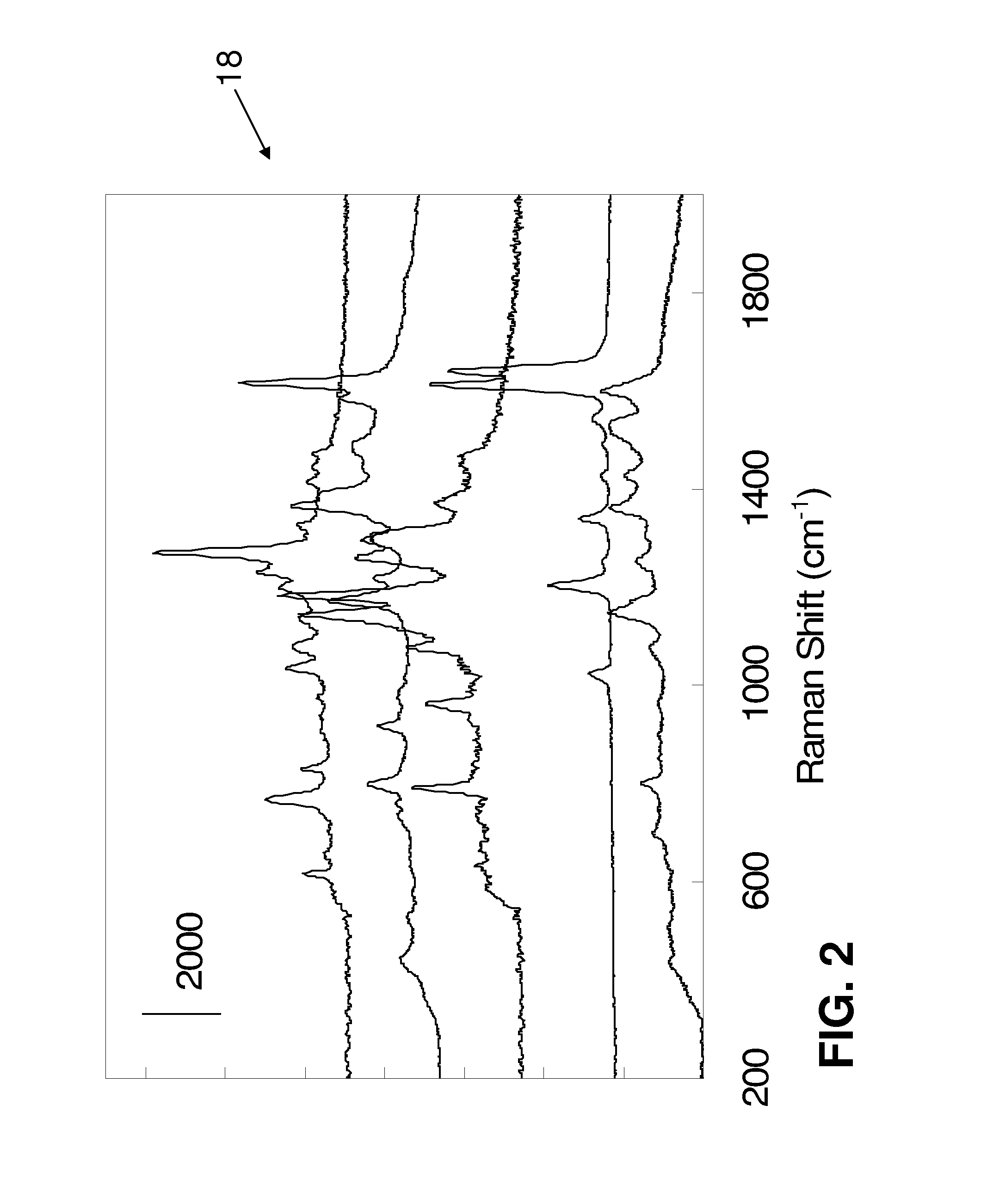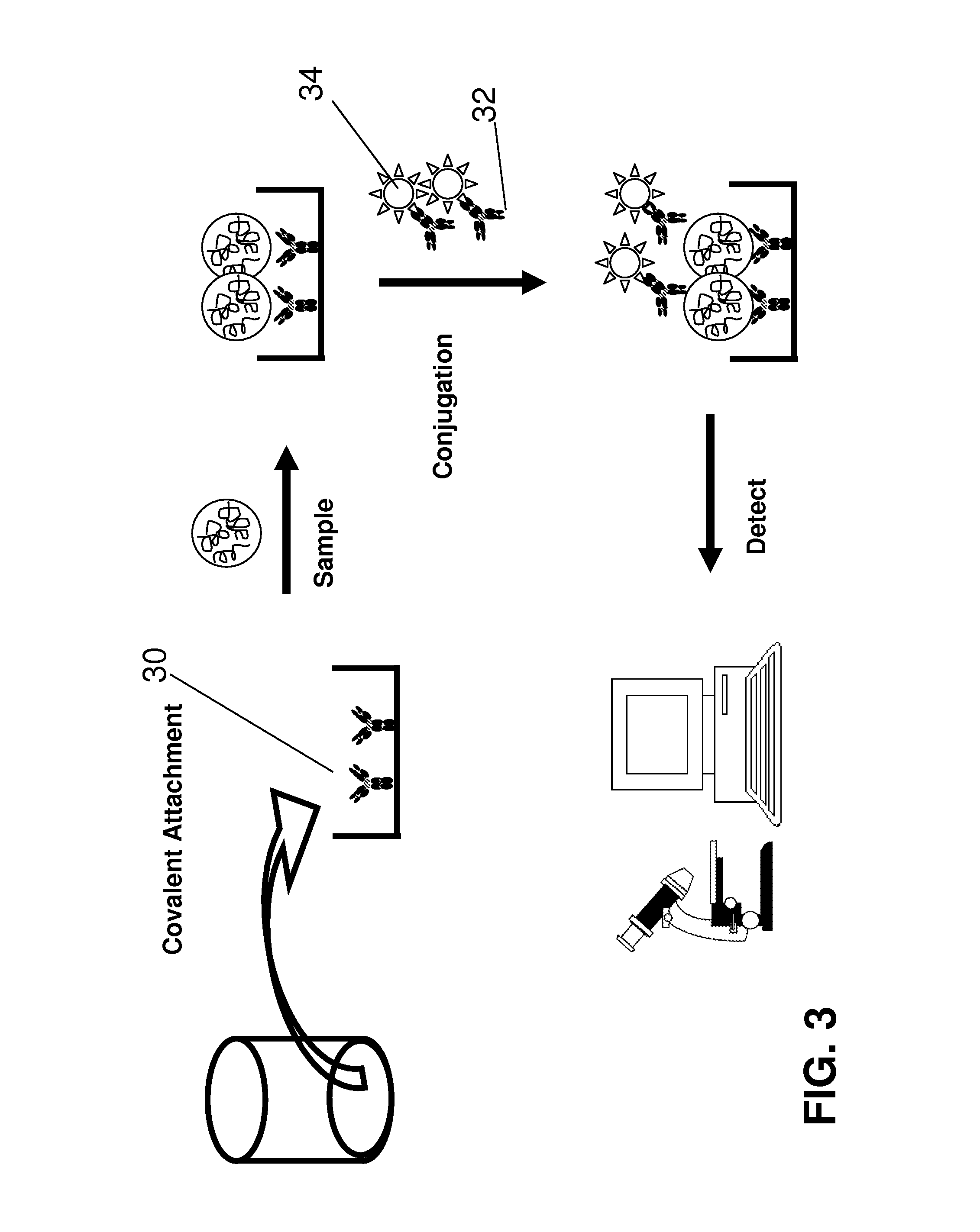SERS Nanotag Assays
a nano-tag and nano-spread technology, applied in the field of surface enhanced raman scattering nano-tags, can solve the problems of high background signal, limited dynamic range and sensitivity, and sensitivity further compromised
- Summary
- Abstract
- Description
- Claims
- Application Information
AI Technical Summary
Benefits of technology
Problems solved by technology
Method used
Image
Examples
example 1
[0078]Representative method for the preparation of an assay featuring the capture of detection tags on an inside test vial wall.
[0079]Materials & Reagents[0080]Readings were taken on a commercially available Raman Spectrum detection device.[0081]Dynabeads M-270 Carboxylic Acid, 2.8 um, Pdt#143.05, Dynal Biotech (Oslo, Norway).[0082]BcMag Silica-Modified Magnetic Beads, 1 um, Cat. Number FF-101 were from BioClone Inc. (San Diego, Calif.).[0083]Anti-human IL-4 Monoclonal (MAB 604) and Goat Polyclonal (AF 204Na) were obtained from R&D Systems (Minneapolis, Minn.).[0084]Anti-human CRP antibodies, Clones 265-10032 and 265-10036 were obtained from OEM Concepts (Toms River, N.J.).[0085]Detection antibody was covalently attached to SERS Nanotag using standard protocol developed at Nanoplex REF.[0086]APTMS, EDC and Succinic Anhydride were obtained from Sigma.[0087](3-Glycidoxypropyl)-Trimethoxysilane. United Chemical Technologies.[0088]Bovine Serum Albumin was from Pierce.[0089]Glass Vials, ...
example 2
[0197]The following example of assays prepared with magnetic capture particles are provided for illustrative purposes only and are not intended to limit the scope of the invention. Applicant has performed experiments on an assay such as depicted in FIG. 11.
[0198]1. Antibody Conjugation to Thiolated-SERS Nanotags
[0199]A solution of sulfo-SMCC (100 μL, 1 mg / ml in water) was added to solution of antibody (50 μg, 50 μl) in PBS. After 30 minutes, the maleimide-activated antibody was purified using a Sephadex G25 microspin desalting column (Amersham). The purified conjugate was then added to thiolated-SERS tags (4×1010 particles in 100 μL PBS). After 2 hours at room temperature, the reaction was quenched for 30 nm with a solution of MESA (50 μL, 10 mg / ml) followed by a 5% BSA solution (25 μL). The tag conjugates were washed, purified by centrifugation and resuspended in 0.1% BSA at the desired concentration in desired buffer.
[0200]2. Carboxylation of Magnetic Glass Coated Beads
[0201]Magne...
example 3
SERS Magnetic Bead Hybridization and DNA Assay
Conjugation
[0225]1. Take 40 ul magnetic beads (8×107). Wash the beads with 50 mM MES (pH 4.5) twice[0226]2. Re-suspend the beads with 163 ul 50 mM MES (pH4.5) and add 2 ul 50 uM oligo (100 pmole), put it on ice.[0227]3. Make 20% EDC in 50 mM MES (pH7.0) (10 mg EDC at 50 ul MES).[0228]4. Add 15 ul 20% EDC to the beads / oligo, Mix well and shaking for 1 hr at 4 C[0229]5. Wash with 500 ul 10 mM PBS for four times. It is very important to wash out all un-conjugation oligo.[0230]6. Resuspend in 40 ul PBS (beads 8×107)
[0231]Hybridization[0232]7. Take 33 ul 2×TMAC buffer, add 5 ul 10 uM oligo and 5 ul magnetic bead probe (4×106) Hybridization at 55 C for 1 hr[0233]8. Wash with 1×SSC at room temperature for 5 min and 0.1×SSC at 55 C for 5 min.[0234]9. Add 1× NeutrAvidin-BPE (SERS tag) and incubated for 30 min.[0235]10. Wash with 10 mM PBS twice[0236]11. Acquire the Raman signal by Reinshaw In Via Raman microscope
E. Competitive SERS / Magnetic Bead ...
PUM
| Property | Measurement | Unit |
|---|---|---|
| width | aaaaa | aaaaa |
| diameter | aaaaa | aaaaa |
| diameter | aaaaa | aaaaa |
Abstract
Description
Claims
Application Information
 Login to View More
Login to View More - R&D
- Intellectual Property
- Life Sciences
- Materials
- Tech Scout
- Unparalleled Data Quality
- Higher Quality Content
- 60% Fewer Hallucinations
Browse by: Latest US Patents, China's latest patents, Technical Efficacy Thesaurus, Application Domain, Technology Topic, Popular Technical Reports.
© 2025 PatSnap. All rights reserved.Legal|Privacy policy|Modern Slavery Act Transparency Statement|Sitemap|About US| Contact US: help@patsnap.com



